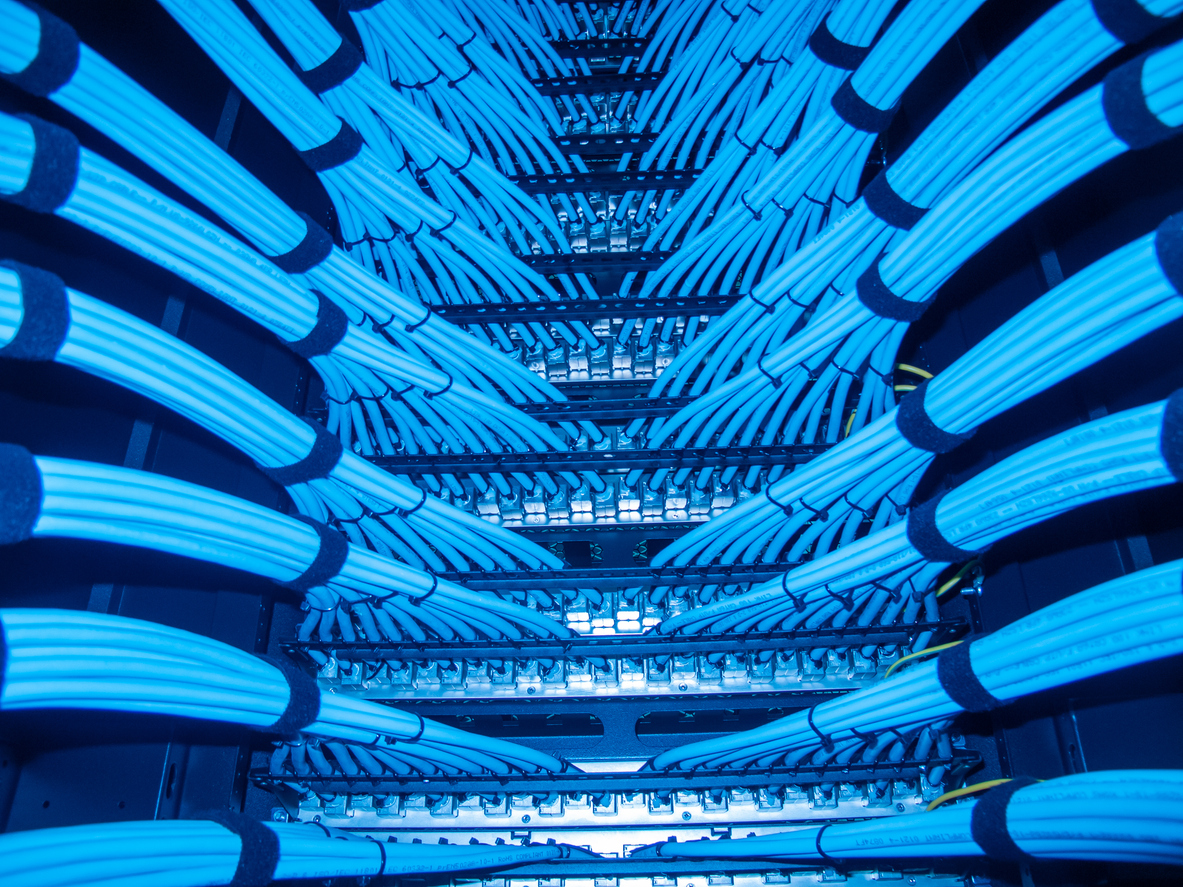Your firm signs a lease on a beautiful 30,000-square-foot office. Everyone is excited until the Wi-Fi crawls, printers time-out, and video calls stutter. Nine times out of ten, the root cause is the invisible highway inside the walls: the structured cabling. But how much does that highway cost to build or upgrade? The short answer: it depends on eight key factors. The long answer, plus actual price ranges and money-saving tips, is below.
Breaking Down Structured Cabling Cost Components
If a cabling quote feels like a foreign language, start by splitting costs into three buckets.
Labor & Installation
Each cable has to be installed, labeled, and tested. In most cities, the cost for a technician is $55–$95 per hour. On average, it takes 30–45 minutes to install one cable, which means labor costs could be $30–$70 per cable.
Materials, Hardware & Cable Category
- Copper cable (Cat5e → Cat8) = $0.20 to $1.90 per foot
- Fiber (OM3, OM4, OS2) = $0.45 to $3.20 per foot
- Patch panels, jacks, racks, ladder tray, Velcro, labels = 15–25% of total materials
Higher-category cable moves data faster but also moves the price needle.
Design, Testing & Certification
Good firms, including Camali Corp’s structured cabling team, design cable routes using specialized software (like CAD/BIM), then certify every run to TIA-568 or ISO/IEC standards. Budget 8–12% of the project for these “soft” costs. Skip them, and you’ll likely pay in downtime later.
8 Key Factors That Influence Structured Cabling Costs
1) Building Size & Layout
An open warehouse is easy to install cables in, but a historic building with narrow spaces is harder and costs more. More turns = more labor hours.
2) Cable Type & Performance
Cat6A costs roughly 30% more than Cat6 but supports 10 Gbps over 328 feet. Fiber cables don’t pick up electrical interference (EMI), making them more reliable and future-proof for decades.
3) Number of Drops & Endpoints
Buying in bulk can save you money, more drops means lower costs per drop. Going from 50 to 200 drops can cut per-drop pricing by 12–18% because technicians stay on site longer and materials ship on one pallet.
4) Pathway & Infrastructure Needs
Conduit, J-hooks (supports for running cables), ladder racks (or cable trays), and sleeves add 10–30% depending on ceiling type and distance to IDF closets. For better efficiency and scalability, explore our network infrastructure solutions to enhance your setup.
5) Codes, Compliance & Certifications
Healthcare and financial facilities often require plenum-rated cable (designed for fire safety in air ducts), redundant pathways, and detailed test reports. Each layer of compliance adds cost.
6) Future-Proofing & Growth
Adding 10% spare drops now is cheaper than opening the walls later. Likewise, running two fibers along with your copper raises material spent today but sidesteps a forklift upgrade tomorrow. For more insights, check out our expert tips for designing a top-tier data center.
7) Geographic Labor Rates
New York labor can be double that of Raleigh. Factor your zip code.
8) Project Timeline & Phasing
Night work or compressed schedules trigger overtime and shift premiums. Phased projects stretch labor mobilization, nudging totals up 3–5%.
Industry Stat – BICSI estimates cabling is just 5% of an IT build-out but causes up to 70% of network downtime when installed poorly (BICSI Standards). In other words, saving pennies now can cost dollars every Friday at 4 p.m. when Zoom freezes.
How to Estimate Your Budget (With Quick-Calc Table)
Most contractors price by drop or by square foot. Here’s the math in plain English.
| Method | Typical 2025 Range | When to Use |
| Per drop | $150–$300 for Cat6A, $200–$450 for OM4 fiber | Office remodels where drop count is known |
| Per square feet | $1.90–$3.50 (light office) to $4–$6 (healthcare/lab) | New builds still in design phase |
Hidden Costs People Forget
- Firestopping sealant for every floor penetration
- Lift rentals for ceilings over 16 ft
- Patch cords (often left out of low bids)
- Cable labeling and as-built drawings, critical for MAC work later
4 Proven Cost-Saving Tips
- Bundle low-voltage scopes (access control, CCTV, Wi-Fi) so crews pull once.
- Standardize on a single cable category across floors to leverage bulk pricing.
- Pre-term fiber trunks for quicker installs in tight timelines.
- Schedule installation before furniture arrives; productivity jumps 25% when floors are clear.
Why Quality Cabling Pays for Itself
Downtime Math & ROI
A Gartner study pegs the average cost of network downtime at $5,600 per minute for mid-size firms. A solid Cat6A backbone slashes retransmissions and heat issues, reducing help-desk tickets by roughly 30% according to TIA-942 case data.
Case Snapshot: 400-Drop Office Refresh
Camali Corp recently upgraded a pharmaceutical office in New Jersey. The client debated Cat6 vs. Cat6A. Our side-by-side model showed Cat6A added $18,000 upfront but avoided a 2027 rip-and-replace worth $90,000. Decision made. Four months post-cutover, user complaints dropped 42% and Wi-Fi 6E adoption sailed through.
Next Steps: Requesting a Precise Quote from Camali Corp
Every building is unique. Use the checklist below, then email info@camalicorp.com or visit our Structured Cabling Services page for a free site walk-through.
Pre-Quote Checklist:
☐ Floor plans with scale
☐ Desired cable category & drop count
☐ Rack/closet locations
☐ Special compliance needs (HIPAA, SOC 2, etc.)
☐ Target timeline
Get a free, fixed-price quote today. No surprises, just reliable bandwidth for years to come.



